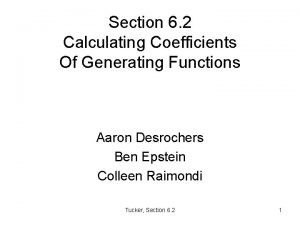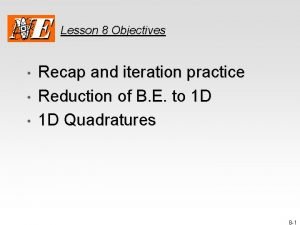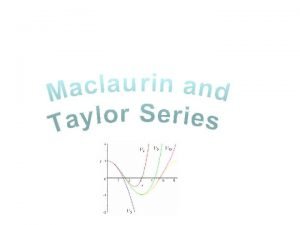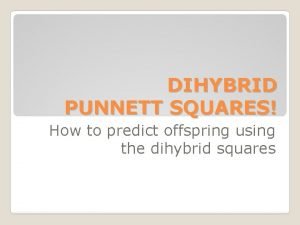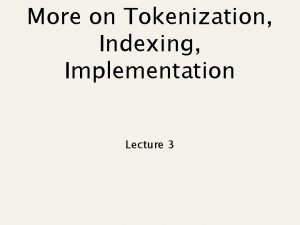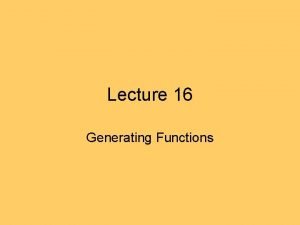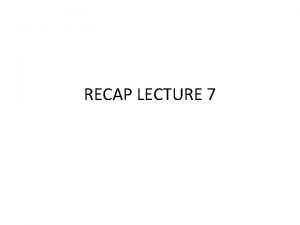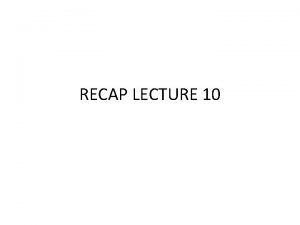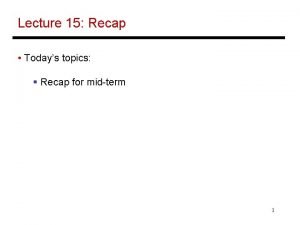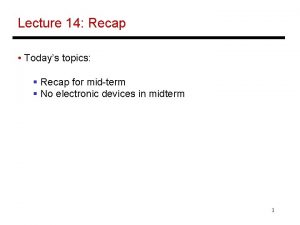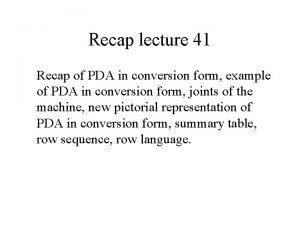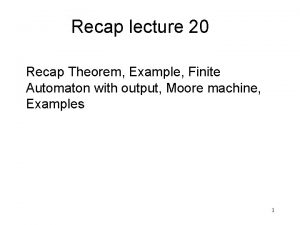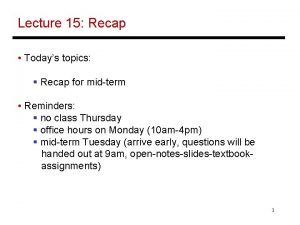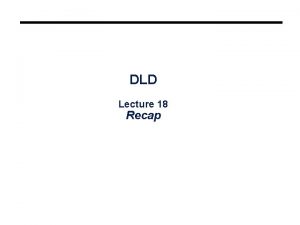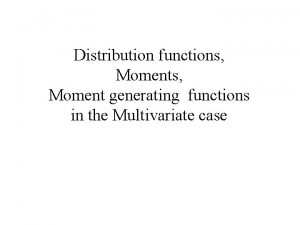Lecture 17 Generating Functions Recap Generating functions are










![Solving Recurrence Relations therefore we have found that a[k]=2 x 3^k is the solution! Solving Recurrence Relations therefore we have found that a[k]=2 x 3^k is the solution!](https://slidetodoc.com/presentation_image_h/9c30414e58bc7b944eb9b43a34486256/image-11.jpg)




- Slides: 15

Lecture 17 Generating Functions

Recap Generating functions are defined by a sequence as follows: Thus: For every sequence there a generating function and for every sequence there is a generating function. Idea: Use properties of functions to solve problems about sequences.

Recap: Important Gen. Functions binomial coefficients adding sequences multiplying sequences

Recap: Extended Binomial Coeff. The binomial theorem was extended to real values for u, using the definition of extended binomial coefficients.

Application to Counting Problems What is the number of r-combinations from a set with n elements when repetition is allowed? I. e. in how many ways can we pick r element from a bag of n elements, when the supply of these elements in infinite (imagine we replace the elements). the balls are replaced when they have been drawn n colors r indistinguishable slots

Application to Counting (1+x+x^2+x^3+x^4+. . . . ) x x^3 1 1 = x^4 This is just one combination of dividing 4 balls into 6 slots. In general we can choose any combination of terms as long as the powers add up to 4. The number of r-combinations of a set with n elements with repetition is therefore equal to the coefficient in front of the term x^4 in the generating function: G(x)=(1+x+x^2+. . . )^n

r-Combinations with repetion Now let’s compute that coefficient: Looks familiar ?

r-combinations without repetition the balls are not replaced when they have been drawn X X n colors (1+x) x x 1 1 = x^4 (1+x) r indistinguishable slots A ball can only be used once, thus it is there or it is not there in the collection of slots. The number of r-combinations of a set with n elements without repetition is therefore equal to the coefficient in front of the generating function G(x)=(1+x)^n

r-combinations without repetition So let’s compute that coefficient: Looks familiar? binomial theorem

Counting with constraints Now let’s say, we want to make sure that we pick r elements out of n with repetition allowed, but we want at least 1 element from each kind: G(x) = (x+x^2+x^3+. . . )^n We are looking for the coefficient of x^r. Here we used the calculation of a few slides back. Here we redefined: j=n+k Note that choosing less than n objects is not possible!
![Solving Recurrence Relations therefore we have found that ak2 x 3k is the solution Solving Recurrence Relations therefore we have found that a[k]=2 x 3^k is the solution!](https://slidetodoc.com/presentation_image_h/9c30414e58bc7b944eb9b43a34486256/image-11.jpg)
Solving Recurrence Relations therefore we have found that a[k]=2 x 3^k is the solution!

Some Exercises (white board)

6. 5 Inclusion-Exclusion U A A B It’s simply a matter of not over-counting the blue area in the intersection.

Now three Sets area = 4 -3=1 U C area = 1 A area = 2 -1=1 B Image a blue circle has area 4. The intersections between 2 circles have area 2 and the intersection between three circles 1. What is the total area covered? A=4+4+4 – 2 -2 -2 + 1 = 12 – 6 + 1 = 7.

General Case Proof: We show that each element is counted exactly once. Assume element ‘a’ is in r sets out of the n sets A 1, . . . , An. -The first term counts ‘a’ r-times=C(r, 1). -The second term counts ‘a’ -C(r, 2) times (there are C(r, 2) pairs in a set of r elements). -The k’th term counts ‘a’ -C(r, k) times (there are C(r, k) k-subsets in a set of r elements). -. . . - If k=r then there are precisely (-1)^(r+1) C(r, r) terms. - For k>r ‘a’ is not in the intersection: it is counted 0 times. Total: C(r, 1)-C(r, 2)+. . . +(-1)^(r+1)C(r, r) Now use: to show that each element is counted exactly once.
 Mikael ferm
Mikael ferm 01:640:244 lecture notes - lecture 15: plat, idah, farad
01:640:244 lecture notes - lecture 15: plat, idah, farad Generating functions
Generating functions What is an essay
What is an essay What is the purpose of an iteration recap
What is the purpose of an iteration recap Black box recap
Black box recap Example of recap
Example of recap Bracket power rule
Bracket power rule Punnett square foil
Punnett square foil Recap indexing scans
Recap indexing scans The shawshank redemption summary
The shawshank redemption summary Act ii the crucible
Act ii the crucible Briefly recap
Briefly recap Socratic seminar questions for the crucible act 1
Socratic seminar questions for the crucible act 1 Ldeq recap
Ldeq recap Recap intensity clipping
Recap intensity clipping


